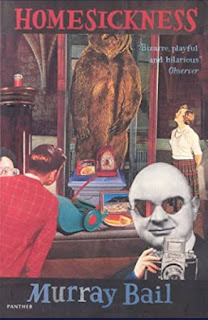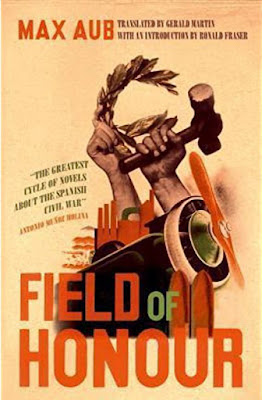Homesickness
I have come to this novel rather late, having read Eucalyptus when it was released in 1998 and, I must admit, nothing by Murray Bail since (re-reading Eucalyptus to teach doesn’t really count). Homesickness was published in 1980, and I have found a second-hand, first paperback edition from that era. His other books are Holden’s Performance (1987); The Pages (2008) and The Voyage (2012). For a writer like me who churns out a novel every ten years, Bail’s pauses between novels are almost encouraging.
My main reason for reading this novel was to see how it
dealt with themes that might be said to connect with the expatriate experience.
I read that Bail lived overseas at the end of the 1960s in India, and then in
England and Europe from 1970 to 1974. Although Homesickness is a 1980 publication, it is most assuredly a 1970s
book; one can almost taste the stale Qantas food and touch the (probably)
too-proud wallpaper in Australia House in London, where two of the characters
do visit (and I am old enough to remember that strange place, where one entered
to read old Australian newspapers; Australia didn’t exist in British media then
– and probably doesn’t to this date and there was no internet umbilcal cord to the [other] mother country).
The short-story-like premise of this book is the rather unlikely
idea that thirteen Australians with no past-connections travel the world
together, and visit museums of the most outlandish mix of the banal and the
surreal. They begin in Africa, thence to London, to Ecuador, to New York, to
London again, and finally, too Russia. In Russia, there is an interlude where the
author shifts to first person and it seems, provides a minor autobiographical
note. Otherwise, the narrative utilises a shifting third person point of view,
and much, much dialogue (often amusing banter of the antipodean variety). Make
no mistake about it, Bail’s knowledge is encyclopaedic; and he is an absolute
craftsman at the sentence level. These traits make the scenes move along, even
as strange museum skits, such as an African museum which features our own
Robert Menzies; a discussion of English art galleries where photos of ‘French canals,
hay stacks and lily ponds’ have replaced the actual art (one assumes,
post-impressionist). There is a Yorkshire museum of corrugated iron, a New York
museum of marriage, and an Englishman whose nose can approximate the changing
colours of Ayers Rock (Uluru to you, mate).
And what of the expatriate experience I went searching for?
The characters are too many to know well, though the Italian-sounding Borelli
comes closest to our affection, with his wise thoughts amid much misunderstanding,
self-centred gazing, and wisecracks of the other characters. Here’s a few
quotations to get a sense of what I enjoyed – and you might, too – if you know
a good thing.
Isolation: ‘Australia? The word was not to be found [in
Britain], not even in the bloody shares page, Gary Atlas pointed out. It might
well not have existed’ (p.77)
Accent: ‘The Australian accent had remained. Words
unexpectedly flattened fell away in mid-air. But to Borelli they leapt out,
waving’ (p.100).
Australian egotism (a matador takes on Australian ‘toughness’):
‘Who are you? You have experienced, what, nothing … suffer through nature and
pain. Emerge strong’ (p.159).
Upside Down: ‘The heads of antipodeans glance upwards … with
its museums and plethora of laws and words the Centre of Gravity lies in the
Northern or Upper Hemisphere’ (p.185).
And there’s a great little collection of quotations in
literature and metaphors connected with kangaroos, just to remind this island
nation that our culture has travelled far, even as we announce it too loudly,
too proudly, as we might have particularly in the 1970s. A clever bunch of
homeless Australians – self-deprecating but sensitive when it all goes too
close to the bone (‘Aye, steady. What are you getting at?’ p.126).




Comments
Post a Comment